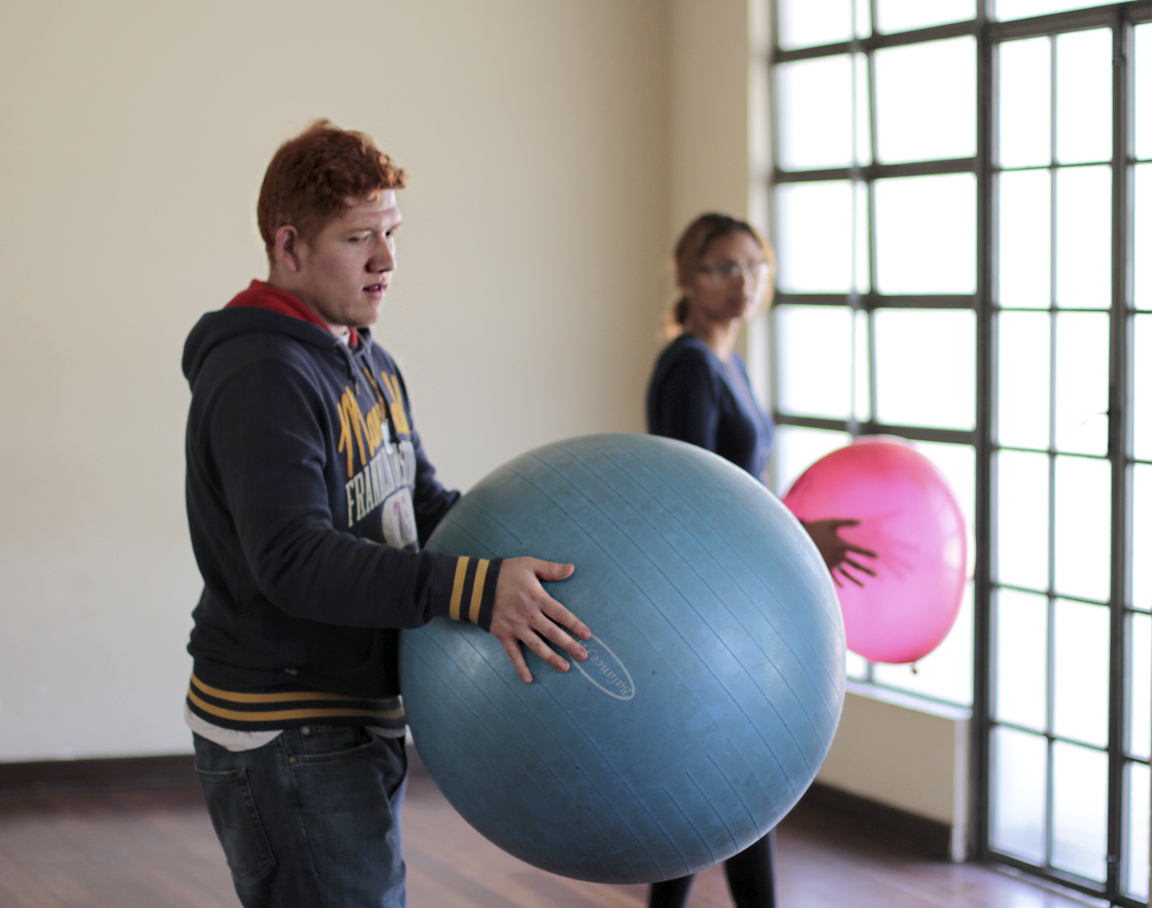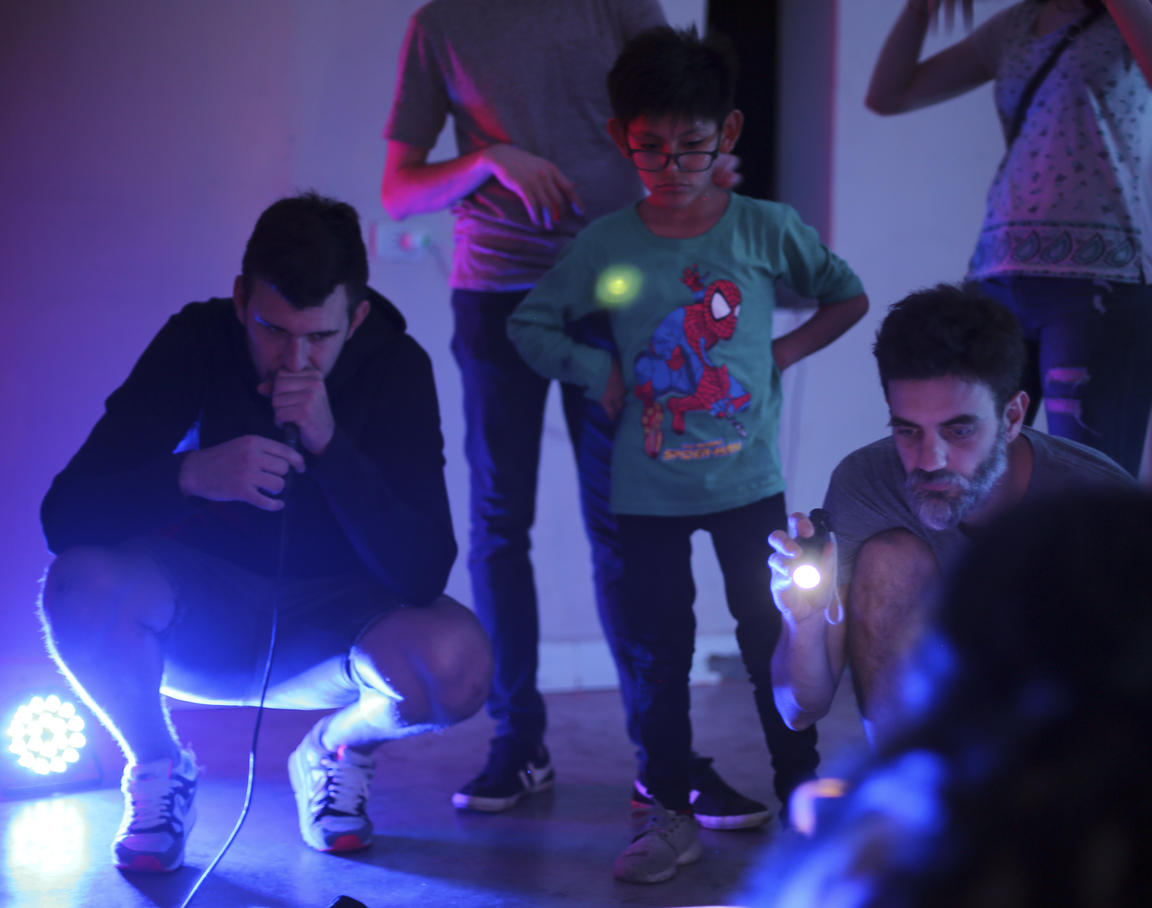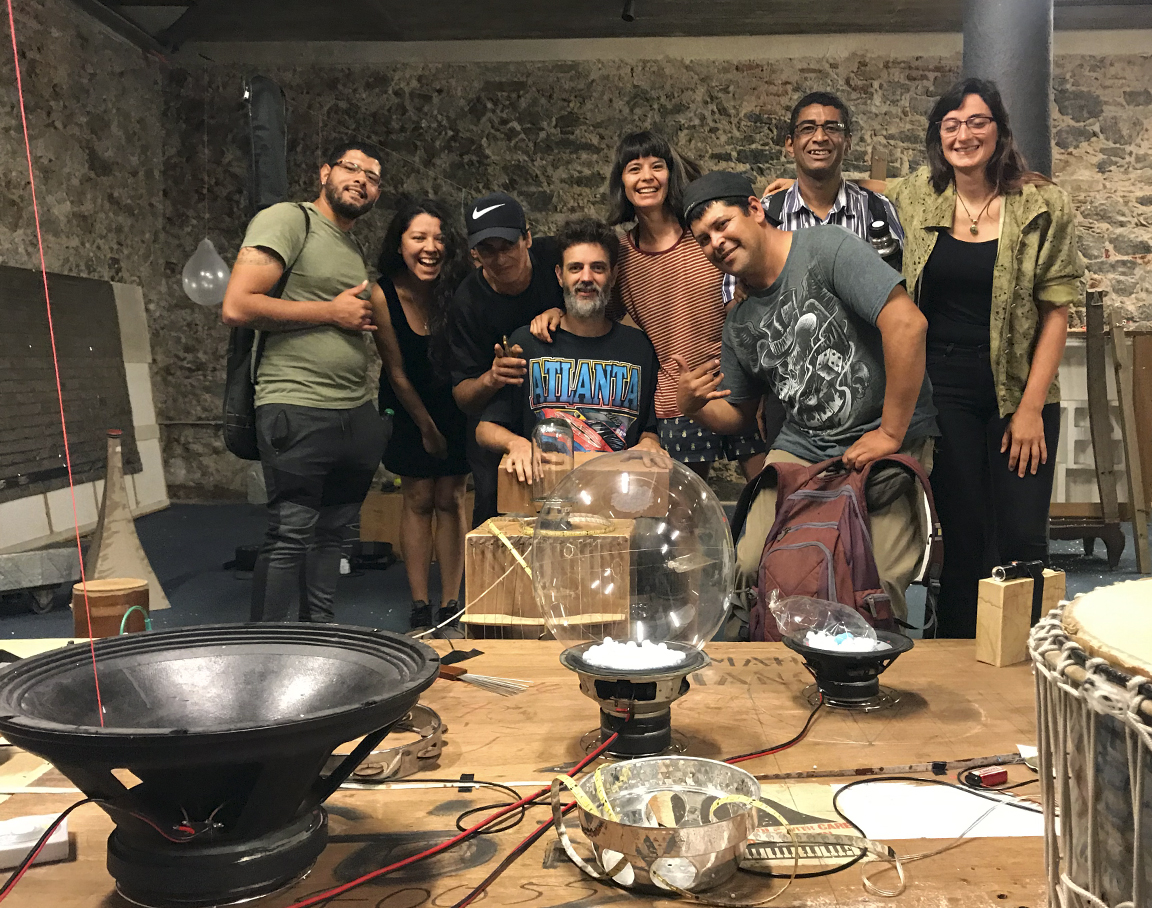I N F R A was made possible with the participation of a diverse community of deaf people, who contributed valuable perspectives from the context of each city. Each laboratory opens a space for debate and reflection from the deaf culture, towards the hearing society, creating a bridge to share their experience with sound and vibration.

Cochabamba
First laboratory
Sonandes Sound Art Biennial
The participants were members of the Cochabamba Deaf Association (A.S.O.R.C.O), which opened its doors and collaborated with the research from the very beginning. The initial group was made up of nine volunteers, interested in movement and body language. A final piece of experimental theater and immersive listening was created, based on the activation and displacement of speakers and membranes in space.

La Paz
Second lab
Center of the Cultural Revolution
Deaf students from the Escuela Superior de Formación de Maestros Simón Bolívar participated in the laboratory, coming from special education, initial education and plastic arts specialties. His concerns connected the laboratory with pedagogy, emphasizing sonic experiences that can be transmitted to deaf students in school. His reflections on deaf identity and culture showed the need to expand Bolivian sign language in formal education and in society. His capacity for teamwork and sensitivity marked the laboratory generating a piece that explores language, music and communication. Victor Romario Llaves , previously a hearing and clairvoyant, now experiences gradual loss of vision and hearing, this transition allowed him to share a lot of valuable information for both the hearing and the deaf, being a key link in the transmission of knowledge and pointing out experiences with high potential for the laboratory.


